Do you have a question about the Panasonic AG-HMC40 and is the answer not in the manual?
Essential guidelines for safe and proper operation, including environmental and handling advice.
Important considerations before shooting, trial shots, and tripod mounting.
Details on compatible SD/SDHC cards and video compatibility.
Lists standard and optional accessories for camera enhancement.
Explanation of the AVCHD standard for high-definition video recording.
Identifies components on the right, rear, and left sides of the camera.
Details the various camera terminals and mounting points.
Explains the functions and operation of the remote control unit.
Instructions for charging the battery and using AC adapter or battery for power.
Attaching hand strap, shoulder strap, lens hood, and handle for usability.
Using viewfinder, LCD, touch panel, and adjusting screen display settings.
Setting the camera's calendar, clock, and time zone for accurate recording.
Using Quick Start mode for faster recording and understanding the tally lamp indicators.
Steps to prepare the camera and SD card, and basic shooting operations.
Using auto mode and detailed manual control for focus, exposure, and color.
Progressive modes, zoom, pre-rec, shot marks, effects, and OIS for enhanced shooting.
Using scene files, managing metadata, and using the counter for time tracking.
Instructions for shooting still photos, including aspect ratio and quality settings.
Navigating and viewing clips/photos via thumbnail screens, including clip info and shot marks.
Playing back video clips and still photos with playback controls and features.
Setting repeat/resume playback, format, and useful playback functions like volume adjustment.
Deleting clips/photos and setting protection to prevent accidental deletion.
Configuring DPOF settings and printing photos via PictBridge.
Connecting headphones and external microphones for audio input.
Connecting to a computer for file transfer and non-linear editing.
Performing non-linear editing of video data on a computer via USB.
Overview of regular displays in CAMERA/PHOTO and PB modes.
Key indicators for recording, battery, media, features, and shooting aids like focus and exposure.
Displays for quality, pixels, format, frame rate, and markers during shooting.
Critical warnings and error messages for troubleshooting camera and SD card issues.
How to navigate and change camera settings via the main setup menus.
Using Quick Menu and Function Navi for fast setting adjustments.
Overview of menu structure and detailed settings for screens like SCENE FILE and CAMERA SETUP.
Common issues and solutions for power, battery, shooting, PC connection, and remote control.
Proper handling of AVCHD data, folder structure, and metadata integrity.
Detailed technical specifications and information on product disposal.
Essential guidelines for safe and proper operation, including environmental and handling advice.
Important considerations before shooting, trial shots, and tripod mounting.
Details on compatible SD/SDHC cards and video compatibility.
Lists standard and optional accessories for camera enhancement.
Explanation of the AVCHD standard for high-definition video recording.
Identifies components on the right, rear, and left sides of the camera.
Details the various camera terminals and mounting points.
Explains the functions and operation of the remote control unit.
Instructions for charging the battery and using AC adapter or battery for power.
Attaching hand strap, shoulder strap, lens hood, and handle for usability.
Using viewfinder, LCD, touch panel, and adjusting screen display settings.
Setting the camera's calendar, clock, and time zone for accurate recording.
Using Quick Start mode for faster recording and understanding the tally lamp indicators.
Steps to prepare the camera and SD card, and basic shooting operations.
Using auto mode and detailed manual control for focus, exposure, and color.
Progressive modes, zoom, pre-rec, shot marks, effects, and OIS for enhanced shooting.
Using scene files, managing metadata, and using the counter for time tracking.
Instructions for shooting still photos, including aspect ratio and quality settings.
Navigating and viewing clips/photos via thumbnail screens, including clip info and shot marks.
Playing back video clips and still photos with playback controls and features.
Setting repeat/resume playback, format, and useful playback functions like volume adjustment.
Deleting clips/photos and setting protection to prevent accidental deletion.
Configuring DPOF settings and printing photos via PictBridge.
Connecting headphones and external microphones for audio input.
Connecting to a computer for file transfer and non-linear editing.
Performing non-linear editing of video data on a computer via USB.
Overview of regular displays in CAMERA/PHOTO and PB modes.
Key indicators for recording, battery, media, features, and shooting aids like focus and exposure.
Displays for quality, pixels, format, frame rate, and markers during shooting.
Critical warnings and error messages for troubleshooting camera and SD card issues.
How to navigate and change camera settings via the main setup menus.
Using Quick Menu and Function Navi for fast setting adjustments.
Overview of menu structure and detailed settings for screens like SCENE FILE and CAMERA SETUP.
Common issues and solutions for power, battery, shooting, PC connection, and remote control.
Proper handling of AVCHD data, folder structure, and metadata integrity.
Detailed technical specifications and information on product disposal.
| Sensor Type | 3MOS |
|---|---|
| Lens | Leica Dicomar |
| Image Stabilization | Optical |
| Recording Format | AVCHD |
| Video Resolution | 1920 x 1080 |
| Frame Rates | 60i, 30p, 24p |
| LCD Screen Size | 2.7 inches |
| Audio Format | Dolby Digital 2ch |
| HDMI Output | Yes |
| USB Interface | USB 2.0 |
| Battery Type | Lithium-ion |
| Type | Camcorder |
| Effective Pixels | 2.07 megapixels |
| Maximum Aperture | f/1.6 (wide) - f/2.8 (tele) |
| Media Type | SD/SDHC |
| LCD Screen Resolution | 230, 000 pixels |
| Viewfinder | Color |
| Microphone | Built-in stereo |
| Weight | 1.1 kg (2.4 lbs) |
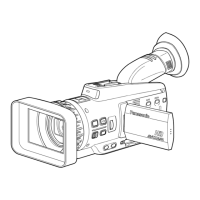
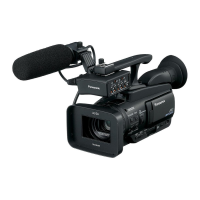
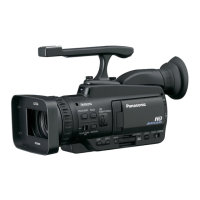
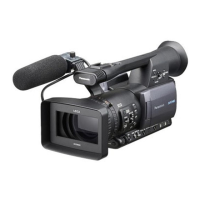
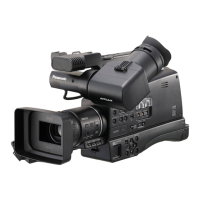
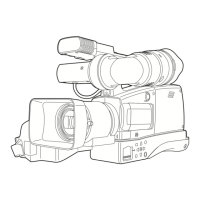
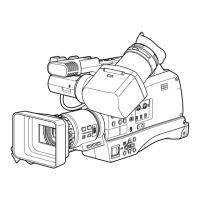
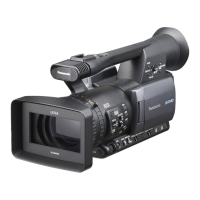

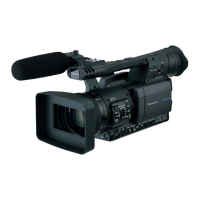
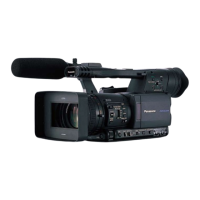
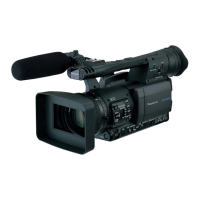
